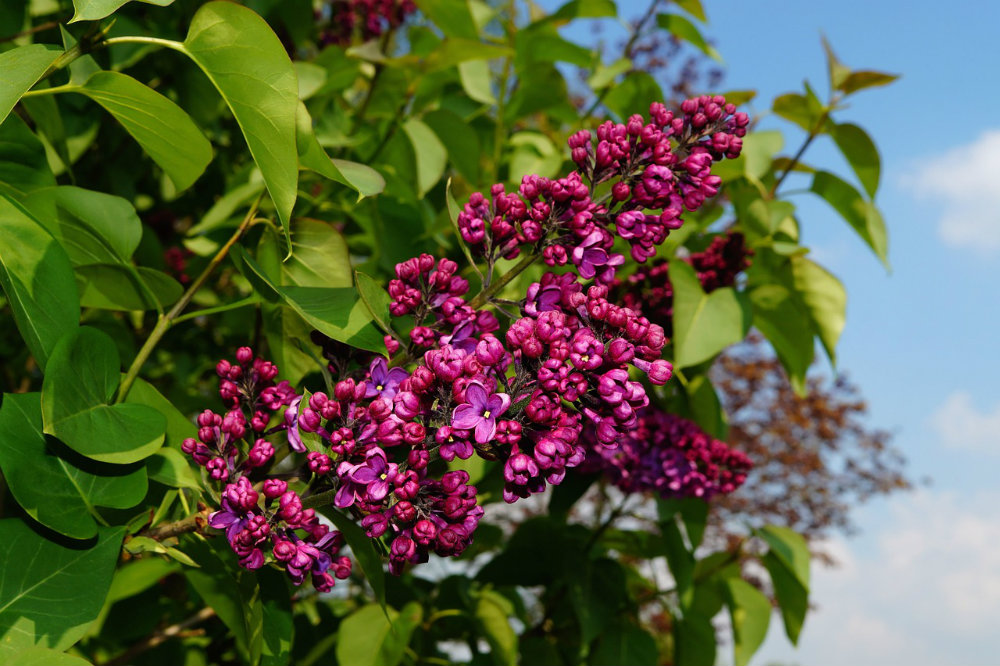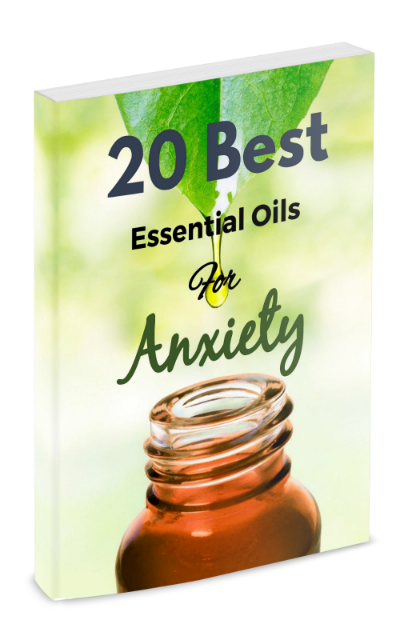The lilac used for lilac essential oil is from the dried leaves and fruit of the shrub Syringa vulgaris, native to south-east Europe. Beautifully fragrant, the scent of lilac is uplifting and promotes feelings of joy.
Lilac shrubs have brown bark and green leaves and can grow to twenty feet tall. In spring, the shrub produces large, fragrant clusters of small flowers in dark mauve, lilac, pink and white. Lilac is now commonly seen in gardens throughout Europe and the United States.
Essential oil of lilac is extracted from the leaves and the bark of the plant using steam distillation. The flowers can be used to create lilac oil infusions.

Lilac Essential Oil for the Mind:
Lilac essential oil, and the smell of lilac itself, is noted for its calming effect.
In aromatherapy, essential oil of lilac can be used to relieve symptoms of anxiety and depression. It can help balance emotions and improve mood.
Lilac Essential Oil Helps Relieve Anxieties Caused By:
- New, stressful situations
- Saddening disappointment
- Overwhelming anger
Blending Lilac Essential Oil for Additional Anxieties:
- Lavender: Calms the heart when overwrought.
- Ylang Ylang: Cooling and soothing when overheated with anger.
- Freesia and Lemon: Eases bad temper from worldly problems.
Lilac Essential Oil for the Body:
Lilac essential oil can be used to treat some skin problems. Lilac oil can be used instead of aloe when treating sunburns or rashes, and it can also be used to treat minor cuts. It also acts as an astringent, tightening the skin and reducing skin lines and wrinkles.
In traditional medicine, lilac was often prescribed as the go-to cure for intestinal parasites. It also helps the function of the digestive system and promotes oral health. It is also very effective in reducing fever.
Lilac in Ancient History
In Greek mythology, lilac might have played a role in the life of one of the more colorful gods, Pan.
Pan become attracted to the nymph Syrinx. The attraction wasn’t mutual, and according to one version of the legend, Syrinx turned herself into a lilac shrub to escape him. Pan then used the branches of the shrub to create the first Pan pipes.
Lilac in Modern History
Even though it grew natively in its south-eastern corner, it took a while before lilac was introduced into the rest of Europe. At the end of the sixteenth century, lilac was taken from Ottoman gardens and spread north and west in Europe.
Lilac was mostly noted for its beauty, and less for its healing properties. The eighteenth-century English botanist William Curtis had this to say about lilacs in his Botanical Magazine:
“Few shrubs are better known in this country than the Lilac few more universally cultivated; there is scarcely a cottage it does not enliven, or a shrubbery it does not beautify.”
In his work Myths and Legends of Flowers, Trees, Fruits, and Plants, the American writer Charles M. Skinner notes that the Puritans introduced lilac to America, and also made a commentary on the meaning people gave to lilac:
“…it is a loved occupant of the garden; and what more beautiful than a lane of lilacs in May with heavy heads nodding over the walk and dripping dew and perfume? Though picked for May festivals it was introduced charily indoors, for to many it was a flower of ill luck — a result of the association of its purple color with the hues of mourning.
An old proverb declares that she who wears lilacs will never wear a wedding ring, and to send a spray of lilac to a fiancé was a delicate way of asking that the engagement be broken.“
Lilac Essential Oil Cautions
Lilac oil should be used with some caution. Some people might be allergic to it, and it can cause redness, rashes, and hives. It would be a good idea to use a skin patch test before applying it to the skin.
Even though lilac flowers can be eaten, consuming lilac essential oil is not recommended. Lilac essential oil should be avoided by children and during pregnancy.


